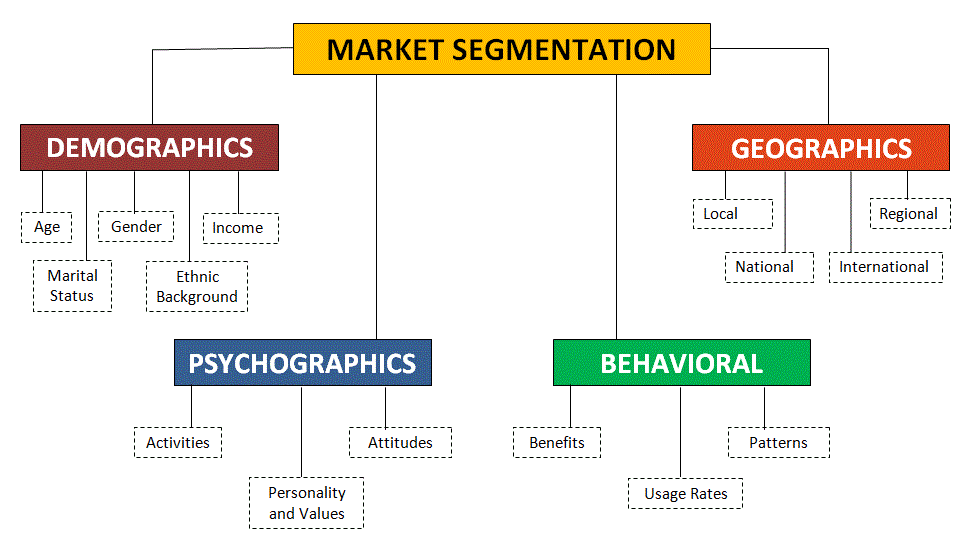Content
Imagine: You post specials on Facebook every week, discounting your 3-day nutrition program more than you can afford, but still no one buys your amazing weight loss product.
No one is interested in losing weight, lowering cholesterol and feeling younger? No, it’s not. It’s probably because you’re ignoring psychographics.
What is psychographics?
Psychographics is something like demographics. Psychographic information can be the habits, hobbies, and values of your customer. Demographics explains “who” your customer is, while psychographics explains “why” they are buying. Demographic information includes gender, age, income, marital status – dry facts.
You can only effectively reach your target audience if you understand both their demographics and psychographics. The combination of both sets of data begins to form your buyer persona—a detailed picture of the people you work with now and would like to work with in the future.
Let’s create a very simple customer persona based on what we know about the ideal nutritional consultant customer.
Demographic profile:
- Woman.
- Age 45-65 years.
- Married.
- Solving problems with weight gain, diabetes, lack of energy or hormonal imbalance.
Psychographic profile:
- Caring for health and appearance.
- The desire to lead a healthy lifestyle, but not enough time.
- Prefers quality.
- Finds satisfaction in his career and family.
- Likes to spend time with friends.
Looking at the two lists above, it’s easy to see why you need them. Use only demographics and you’ll have a very vague idea of your audience – you understand their problems, but you don’t know where to find them or what really drives them to action. Psychography gives you much more information!
There are many different ways to segment a market by psychographic dimensions, but the most popular are personality traits, life cycle stage, interests, attitudes or beliefs, and activities. Marketers can also distinguish consumer groups based on their buying priorities, social class, income, and so on.
Psychographics versus demographics
Segmentation is an incredibly important marketing exercise. By tailoring content for specific groups, marketers can turn leads into customers more cost-effectively.
However, people who fall into the same demographic do not necessarily fall into the same psychographic group – prospects may have different habits, interests, preferences, and values that make them unique in how marketers should target them. .
There are a few major distinguishing differences between psychographics and demographics that can positively impact your team’s marketing results.
Demography:
- Age.
- Gender.
- Profession.
- The level of education.
- Religion.
Psychographics:
- Personality characteristics.
- Lifestyle.
- Social class.
- Principles and beliefs.
- Activities and interests.
Often, consumers are guided by their attitudes and subjective perceptions when making a purchasing decision, and psychography covers such aspects of the buying process. Demographic segmentation will help to segment your market broadly, but psychographics gives marketers more leverage over conversions. For example, demographic information may tell you something about a person’s age, but psychographic information will tell you that this person is just starting a family and is in the baby products market.
Psychographic factors
Psychographic segmentation is similar to behavioral segmentation in that groups are created based on more personal or individual criteria. Consumer psychology is primarily concerned with lifestyle, habits, behavior and interests. Each of the unique psychological profiles—temperament, personality, quirks, and other traits—strongly influences consumer behavior.
Consumer habits or interests can tell the marketer what consumers spend a lot of time on. If your target customer loves yoga and you’re trying to market your nutrition program to them, you can include yoga-related images or offers. Alternatively, you can advertise your program in yoga studios.
Psychographic profiling
When organizations create a unique description of the attitudes, habits, and interests of an individual or group, this is called a psychographic profile. This is similar to the target personality as it represents the set of consumer values and behaviors most receptive to the organization’s offerings. Since consumers often make decisions based on psychographic parameters, such as personal preferences or values, such profiling can be very effective.
Personality influences many thoughts and subsequent behaviors, so understanding the psyche of your audience can greatly improve reach methods, advertising style, and brand emotionality.
Expert in legal marketing. Head of marketing agency MAVR.
Business degree “Master of Business Administration” (MBA).

